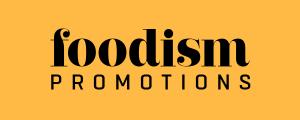Along 34,000 miles of coastline in the far north of the planet in an American state that spends much of the year iced over, more than 60,000 people’s livelihoods centre around the immense, abundant and often unforgiving ocean. Alaska isn’t called The Last Frontier for no reason – it really does feel like the last port of call in civilisation before you reach the top of the world. With approximately just 160,000 of its 365 million acres developed, this is a state steeped in deep wilderness. What better place for wildlife to survive, then?
Wild – that’s the key part of Alaska seafood. Caught in the wild, the immense amount of seafood that is exported from the state has lived a full life in the open ocean – or rivers – that traverse and intersect this great expanse of land. It means that every piece of salmon, leg of crab or fillet of halibut that makes its way onto a plate in the UK has been sought out by a hardy Alaskan – 60,000 of them, to be exact.
Lions Head Mountain looms over fishing grounds north of Juneau
Howard Kerry
Of that number, women make up around just 14%, although the amount is growing. Whether they got into the industry because their father was a fisherman and they grew up on the water surrounded by nets and hooks and rods, or they sought it out after falling in love with the immense, rugged beauty of Alaska, these women are redefining an industry that is uniquely woven into the tapestry of the Alaskan state.
No matter if they’re dropping crab pots to haul in monster Alaska king crabs, spending days at sea netting for salmon, or trawling for Pacific cod, these incredible women are an inherent part of a multi-billion dollar industry that has come to, in many ways, define the state of Alaska.
Once caught, their sustainably harvested fish is then flash-frozen and shipped to the UK where it makes its way onto plates everywhere from home dining tables to Michelin-starred kitchens.
For more information, visit wildalaskaseafood.co.uk
Behind the scenes of three Alaskan fisherwomen
Carley Moller
Dungeness Crab
Carley Moller was taught to fish by her father, a fisherman in the Bering Sea who “wanted his kids to experience the kind of life he grew up with”. She says one of her favourite fishing moments was hauling her first commercial crab pot. “I now know why he loves to crab,” she says. “The feeling you get when you haul a pot is completely worth the sleepless nights.” For Moller, though, the life of fishing in Alaska is about so much more than making money, it’s about loving and respecting the ocean. “I take care of every fish, pressure-bleeding it and slush-icing it so that we can provide the best quality protein,” she says. “Caring for fish throughout the process is respecting it, and allows it to reach its full, high-quality potential.” This potential is what translates directly to the plate.
Read Carley's story here
Carley Moller holding up an Alaskan salmon
Lynn Selboe
Pacific Cod
Lynn Selboe has been fishing Pacific cod in Alaskan waters for 27 years. “I started as a processor in 1993 – with the plan to fish for two years – and worked my way up on deck and into the wheelhouse,” she says of her journey in the industry.
Now working as the mate on the F/T Araho, she says her favourite thing about fishing in Alaska is that “it’s a place, a job, where people of different races, cultures and backgrounds come together to work, and you are judged only by how well you work, as well as your character and respect for others.”
With a relatively short lifespan, Pacific cod tend to only live for a maximum of 20 years. As a schooling fish, they travel annually from spawning grounds in deeper waters to their key feeding locations in shallower waters. Fishing boats in Alaska operate under strict quotas when it comes to Pacific cod to ensure future stocks of the fish are protected, and catch monitoring is thorough across the state. The fish is extremely high in protein and has all nine amino acids the body can’t produce itself. It’s also incredibly high in selenium which, among other things, serves as a powerful antioxidant and boosts the immune system.
Read Lynn's story here
Lynn Selboe on a fishing boat
Kinsey Brown holding up two Alaskan crabs
McKenzie Daigle
Salmon
“I love the simplicity of fishing. You get a break from the hustle of life on land,” says Mckenzie Daigle, who fishes for salmon in Alaska. She acknowledges that while fishing can be “a bit risky”, it will also always welcome you “as long as you can work hard and be decent to your fellow crew.” For Dingle, fishing in Alaska is particularly special because of the state’s pristine wilderness, and, as such, she says sustainability is key.
“It allows all living things to keep on living,” she says. “The world is fragile and deserves our effort to keep it going.”
Alaska is home to seven species of salmon, each with its own unique flavour profile that makes it a rich and varied resource. The life cycle of the fish means it travels from rivers to the ocean and back in one lifetime for spawning. In Alaska, the future of wild salmon is consistently prioritised over the harvest. As such, there are catch limits and specific escapement goals set by biologists to ensure enough fish return to the freshwater spawning grounds to reproduce.
The health benefits of Alaska salmon, meanwhile, are many and varied, from improved heart health and brain function to providing vital nutrients for the growth and development of prenatal babies and infants.
Read McKenzie's story here

